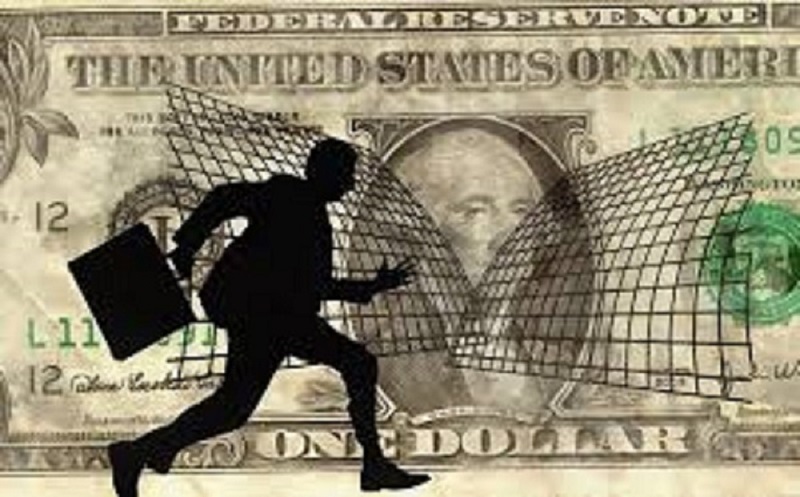
The currency run in the parallel dollar occurs in a context of dollar scarcity that was finally triggered by the drought. But the problem is other one. In the last three years they entered the country U$S 48,500 million for the commercial balancebut the reserves of the Central Bank fell by US$ 5,000 million. Why are those dollars missing today? In what ways were they squandered?
The problem is not (only) the drought
It is estimated that the losses drought that affects the production of soybeans and cereals will reach US$ 20,000 million dollars that will not enter the country this year for exports. To this, we must add the fiscal effect and the effect on economic activity.
But the lack of dollars is not the result of this extraordinary climatic event (which, that is to say, is not merely a “natural” phenomenon, but a product of global warming to which the voracity of capitalism leads), which will begin to be felt in the coming months. due to the lower liquidation of agricultural dollars. In the last three years they had record exportsboth by volume and mainly by phigh international prices, and yet none of that remained in the country.
According to data from the Central Bank, from December 2019 to February of this year the trade balance (difference between exports and imports) gave a positive result of US$ 48.490 million. To take the dimension of the matter, it is an amount greater than the loan that the IMF disbursed in the macrismo and that was validated and restructured by the Frente de Todos.
Dollars also entered for disbursements from the IMF and other international organizations for US$ 7,018 million, and another US$ 2,553 million for foreign direct investment.
However, in the same period the Book reserves of the Central Bank fell by US$ 5,063 million. How were all the dollars that entered squandered? The answer is that, despite the exchange rate, there was a “free way” for speculators.
The escape windows
The main items through which the dollars of the trade surplus came out were debt payments, both interest and capital, by the private sector and by the public sector. In this way, more than US$ 40,000 million.
A large part also escaped due to the balance of services such as freight and travel and passenger transport, the remittance of profits and dividends by foreign companies, the “capital flight” identified as Foreign asset formation, and intervention in dollars (MEP and CCL) with bonds, which is another form of flight.
Let’s see more in detail.
– Net interest payment:
The foreign debt is a heavy burden. Interest payments to the IMF totaled US$ 5,086, which, although they were partly paid with the disbursements of the extended facilities agreement, will still have to be repaid in excess from now on.
However, there is also an important use of dollars for the payment of debt interest by the private sector (large companies), of US$ 8,404 million.

– Payment of debt principal:
Payments for financial loans were one of the main outputs. And it was also the action of the private sector, that is, of both local and foreign economic groups that operate in the country and that have taken on debt abroad or internal debt in dollars. Of the US$ 18,922 million that leaked this way, more than 95% corresponds to companies and only the rest was paid by the public sector.
According to a CEPA report, a smaller part responds to the net cancellation of loans and titles abroad. What happened is fundamentally a substitution of local debt in dollars for debt in pesos. This “net cancellation of local financing” cannot be explained by a need on the part of the banks, since foreign currency deposits remained intact at 95% of the stock. The explanation, according to CEPA, is that “the export sectors sought to replace the local debt in dollars with debt in local currency.”
As the economist Pablo Anino points out, this is a mechanism that often conceals a Central Bank fraud because companies ask for dollars to pay intra-firm debt: that is, to pay themselves. It is a mechanism to withdraw dollars to their headquarters, located in the economic powers.
– Services:
Another important departure had to do with the services account. Among which is included an increase in freight (which is provided especially by foreign companies), and an exit for Travel and passenger transport.

– Capital flight:
Due to the formation of external assets, some USD 4,778 millionof which 9 out of 10 dollars corresponded to the non-financial private sector, and the rest to the financial sector (mainly banks).
– Profits and dividends:
The dependent and foreign structure makes companies permanently seek to make their profits abroad. Through this declared route, some US$ 545 million left.
– MEL/CCL intervention with bonuses:
On the day of this Tuesday where the blue dollar rose but also financial dollars (MEP dollar or stock market and cash with liquidation), the Central Bank intervened by selling dollars against bonds to prevent the MEP dollar from rising. The government also sold bonds in pesos, to achieve the same result (which further plunged the price of local public debt).
These interventions have cost the Central Bank dearly, confirming the flight of foreign currency and the demand of speculators against the local currency. In total, in the last three years some US$ 2,777 million were lost through this route.
– Evasion:
In addition to these operations registered by the Central Bank, the trade surplus could be even higher if the large exporters did not carry out permanent under-invoicing of exports, so as not to have to liquidate them and incidentally pay less taxes (withholdings), such as what was demonstrated in the Vicentín case.
Or the access to the “cheap” official exchange rate by importers is used to over-invoice imports between companies of the same economic group and thus flee foreign currency.
A historic looting
Beyond the immediate factors that explain the run towards the dollar, the recurring shortage of foreign currency has deep causes linked to the productive backwardness and the dependence suffered by the country due to the looting of the imperialist powers.
The big capitalists and the banks operate in this troubled river to take advantage and speculate on a devaluation, at the same time that they press for it to occur.
A devaluation is a measure that generates extraordinary benefits for a few and means a transfer of income from the working people to big capital.
Although for the moment the parallel dollar (blue and financial) is rising and these costs are beginning to be transferred by businessmen to price chains, a devaluation of the official exchange rate would be an even more ferocious blow to the working class. This would imply more fuel for inflation, and would destroy wages.
Measures of a different kind are needed to stop inflation, rebuild the country’s reserves, and reorganize the economy on other bases, putting the needs of the social majorities and the development of the country first, and not the thirst for profit of the powerful as always.
For this, the agreement with the Fund and the payment of the fraudulent debt must be rejected, the banks nationalized and a single state bank set up under the control of the workers and the nationalization of foreign trade.
Source: www.laizquierdadiario.com

